What do Red Jacket, Pompey Fleet, James Macpherson, Mary Washington, and Geoffrey Chaucer have in common? They all are depicted in, influences for, or creators of the 300 (give or take a few, depending on how you count them) broadside ballads Isaiah Thomas collected from Boston printer Nathaniel Coverly in 1814. Mostly printed in Coverly’s shop between 1812 and 1814, these ballads offer a window into street life in early America, with an eye towards the future but with a preoccupation with the past. Thomas coined the term “verses in vogue with the vulgar” to describe this collection that he had bound in three volumes and that are some of our earliest holdings.
We have just launched the Isaiah Thomas Broadside Ballads Project: Verses in Vogue with the Vulgar that not only includes these broadsides with detailed images of the broadsides themselves and of every woodcut and ornament included on them, but also extensive scholarship explaining the sources of these ballads, both musically and thematically, and their material history.
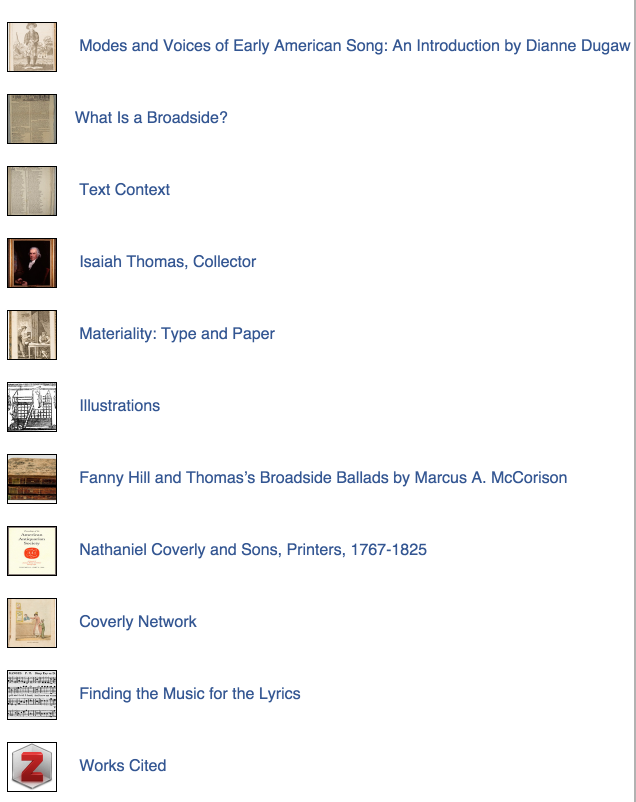
In addition to the short essays that accompany each broadside, longer essays give an overview of the content, detailing the Coverly printing network, the type and paper used to print the broadsides, and the culture of song in early America. All of the sources cited in these essays and in the individual broadside essays are in the Works Cited, which includes over 1,200 sources. Please join our Zotero group, which is open to the public and will allow a user to export these citations as needed.
History of the Project
Arthur Schrader, a ballad singer and music associate at Old Sturbridge Village from 1956 to 1977, worked assiduously with this collection and first published on it in our Proceedings. Kate Van Winkle Keller, who is the primary author of the content on the site, consulted with Schrader starting in 2002 until shortly before Schrader’s death in 2004. Caroline Sloat, then AAS director of book publication, worked with Keller on what was to be a three-volume book with images of the broadsides accompanying Keller’s prose on the ballads as a whole and on the content, both graphic and textual, of each broadside. Our president Ellen S. Dunlap increasingly saw the potential for a dynamic digital project, and with the help of funds left by Arthur Schrader to continue work on the broadsides, Dunlap charged me, AAS’s digital humanities curator and ACLS public fellow, with managing the project you see here. This is AAS’s first project in Omeka, which we were guided through with the expert help of Omeka web developer Ken Albers. And Ken has us hooked! Please look out for many more Omeka exhibitions to feature our collections in the year ahead.
Features of the Website
Transforming this project from the bound book format with thematic chapters and essays that tied together was an exciting challenge. I want to take a moment to explain how we adopted some of the book features into web features in an effort to share with users how to make best use of the site.
In the spirit of AAS’s rich tradition of deep cataloging, extensive subject headings are provided (using Library of Congress Subject Headings, of course) for each broadside, and these subject headings can all be searched. These subject headings allow a user to group the ballads thematically in a way analogous to chapters in a book. For example, by clicking on “Adultery” one can see that two broadsides include ballads on this subject: “Penny-Worth of Wit” and “The Country ’Squire.”
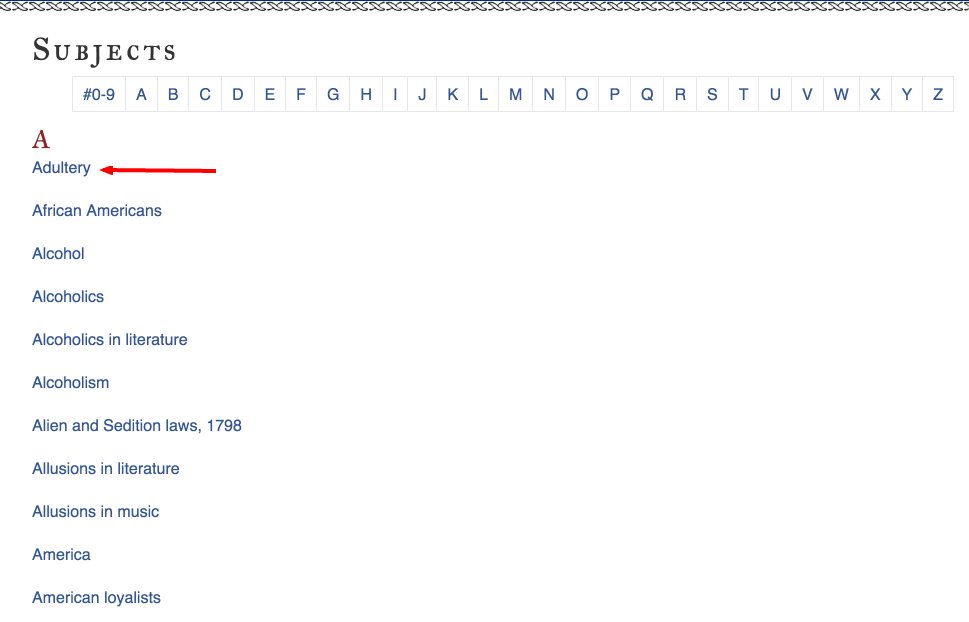
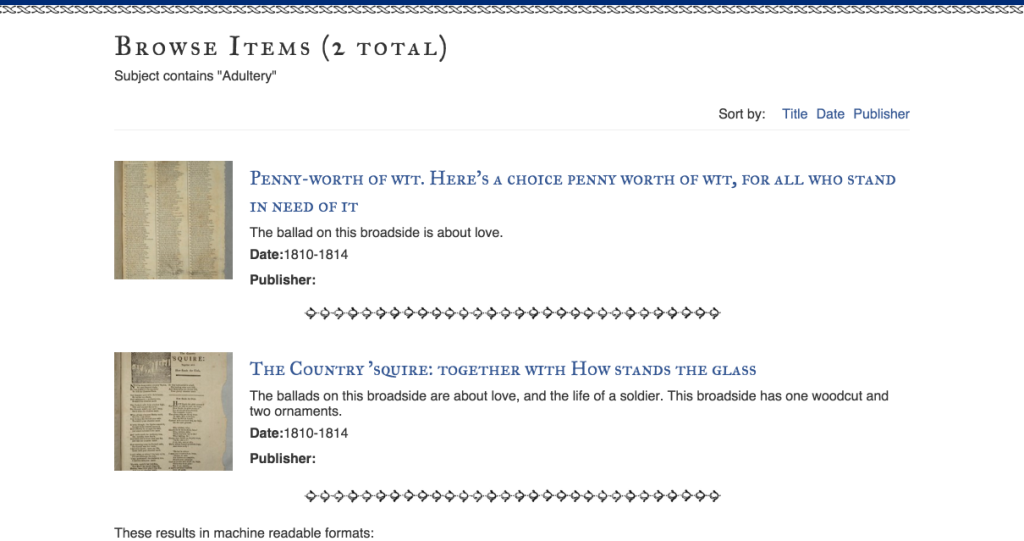
Our hope is that the extensive use of these subject searches will allow users to at once see how thematically capacious these ballads are and also to have a means to navigate through them with ease.
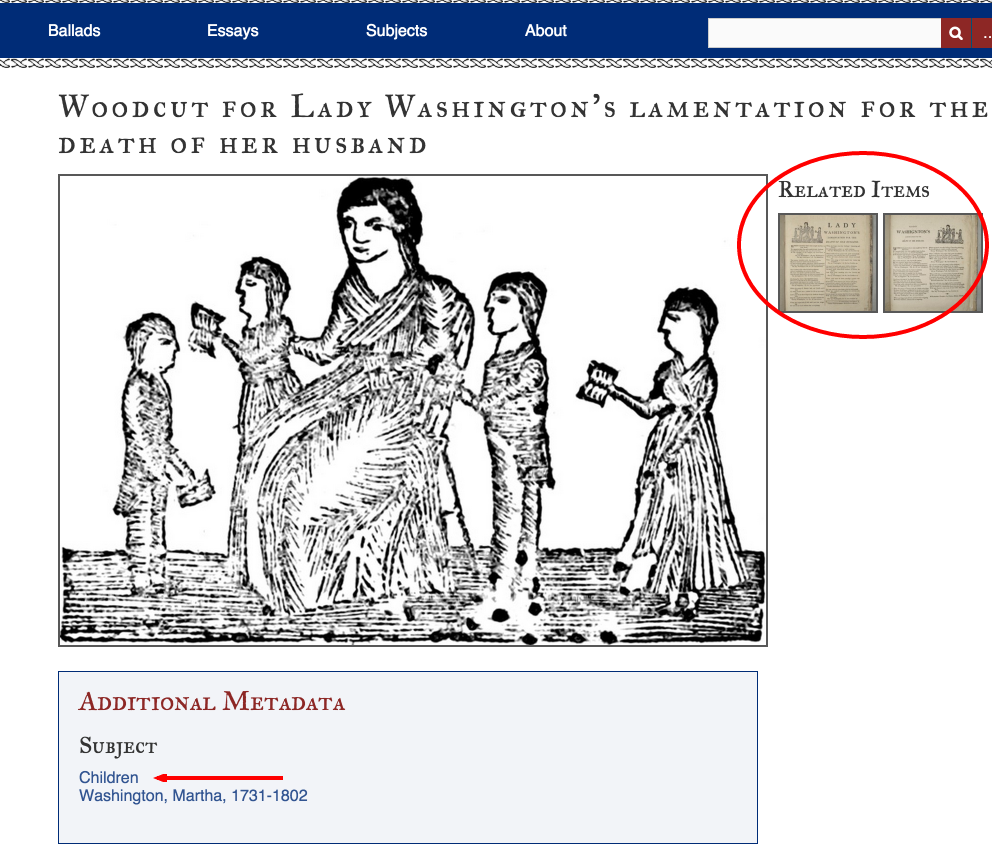 Other mechanisms are also in place to illuminate the relationality of the broadsides. For example, most individual essays make reference to other ballads that share a tune or perhaps a thematic link. In addition, the woodcuts that appear on multiple broadsides can be traced. Note for example to the right here that the “Woodcut for Lady Washington’s Lamentation for the Death of her Husband” can be found on two separate broadsides.
Other mechanisms are also in place to illuminate the relationality of the broadsides. For example, most individual essays make reference to other ballads that share a tune or perhaps a thematic link. In addition, the woodcuts that appear on multiple broadsides can be traced. Note for example to the right here that the “Woodcut for Lady Washington’s Lamentation for the Death of her Husband” can be found on two separate broadsides.
Note too that the subject headings appear at the bottom of the page. By clicking on “children,” one can see the 10 total items that include this subject heading as well. Any combination of search results can be exported by the user in a number of machine-readable formats.
We welcome your feedback on this site as we continue its development in the year ahead. We hope to provide encoded transcriptions of the ballads, and eventually audio for some of the ballads. Please email me with questions, comments, or news of how the site is being used.


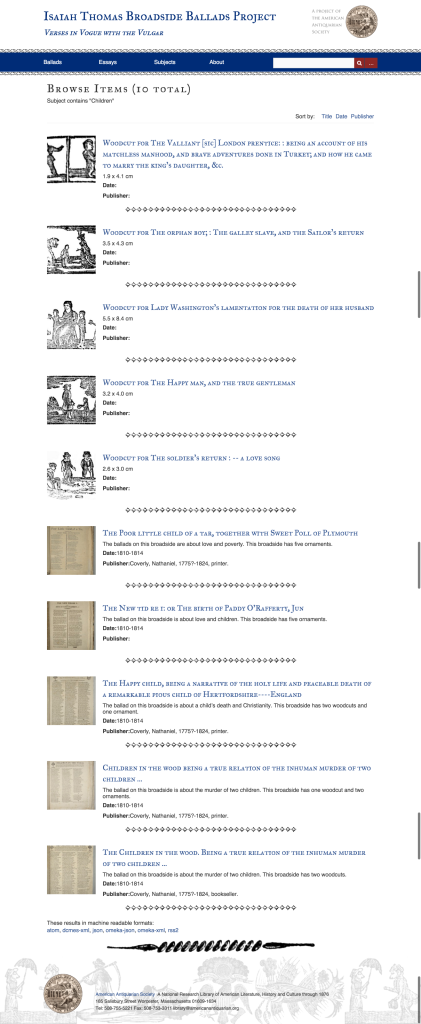
2 thoughts on “Isaiah Thomas’s Broadside Ballads: Verses in Vogue with the Vulgar”